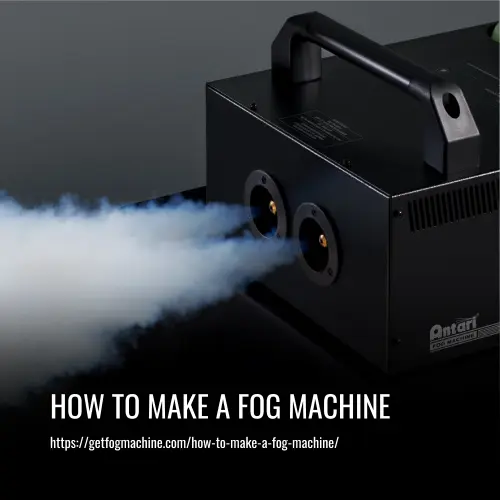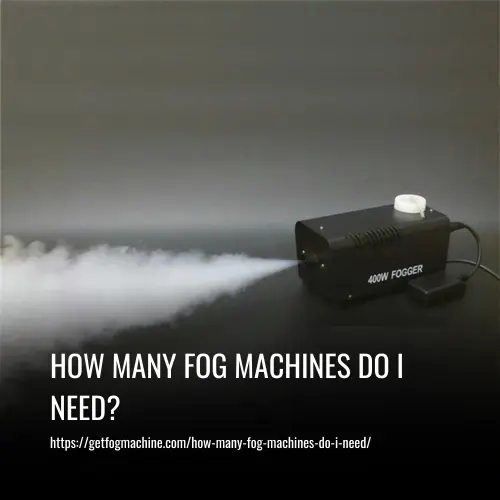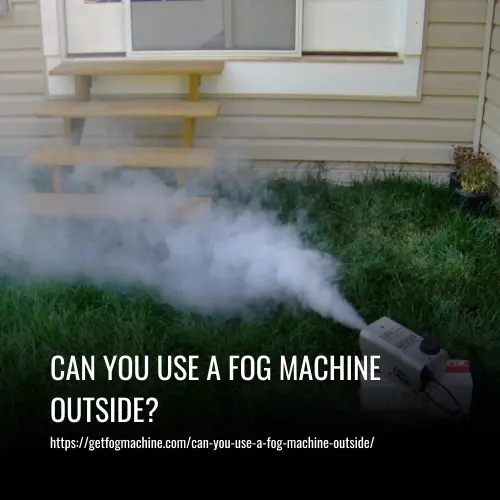How Many Watts Does a Fog Machine Use? Explained
This post contains affiliate links. As an Amazon Associate, we earn from qualifying purchases.

Understanding the Wattage of a Fog Machine
Understanding the wattage of a fog machine is essential to understanding its performance capabilities. Wattage refers to the amount of power consumed by the machine. In relation to fog machines, wattage directly affects the evaporation rate of the fog juice.
Higher wattage machines, typically ranging from 400 to 1800 watts, generate more heat and produce fog at a faster rate. This means that the fog juice evaporates quickly, resulting in a shorter fog production time. These powerful machines are ideal for large areas or events where a heavy blanket of fog is desired.
On the other hand, lower wattage machines, such as a 400-watt machine, have a slower evaporation rate. This means that the fog juice lasts longer, allowing for an extended period of fog production. These machines are suitable for smaller areas or events where a steady, continuous fog effect is desired.
Understanding the wattage of a fog machine is crucial when selecting the right machine for your needs. Higher wattage machines are great for creating impressive fog clouds quickly, while lower wattage machines provide a longer-lasting fog effect.
Power Draw of Different Types of Fog Machines
When it comes to fog machines, determining their power draw is crucial for ensuring they are compatible with your electrical setup. Different types of fog machines have varying wattage requirements. Understanding the power draw of fog machines can help you choose the right machine for your needs and prevent electrical issues during use.
Here we will explore the power draw of different types of fog machines, ranging from compact models to professional-grade machines, and discuss the factors that affect their power consumption. Let’s dive in and discover how many watts each type of fog machine generally uses.
1. Standard Fog Machine Wattage Requirements
The wattage requirements of a standard fog machine can vary depending on the specific model and manufacturer. However, most standard fog machines typically range from 400 to 1800 watts. These machines use this power to heat up the fog fluid and create a fog effect.
It’s important to consider the wattage of a fog machine when determining how many machines can be safely run on a single electrical circuit. Using a wattage calculator or consulting with a professional can help ensure that you are using the appropriate circuits and breakers to power your fog machines safely.
2. Low-Lying Fog Machines Wattage Requirements
Low-lying fog machines typically range in wattage from 400 watts to 1800 watts. The wattage requirement for a low-lying fog machine depends on its size, power output, and desired effect. Smaller, compact fog machines may have a lower wattage requirement, while larger and more powerful machines may require higher wattage to produce a dense and long-lasting fog effect.
It is important to consider the wattage of the fog machine when planning an event or party to ensure that the electrical circuit can handle the power draw.
3. Haze Machines Wattage Requirements
Haze machines use a lower wattage compared to fog machines. On average, haze machines range from 200 watts to 800 watts, depending on the type and model. The lower wattage is due to the different way haze machines create a fine, almost invisible mist, compared to the dense fog produced by fog machines.
This lower wattage requirement makes haze machines more energy-efficient and allows for longer periods of continuous operation without overheating or tripping circuit breakers. It also makes them suitable for smaller venues or events where a more subtle, atmospheric effect is desired.
4. Smoke Machines Wattage Requirements
Smoke machines, also known as fog machines, vary in their wattage requirements depending on the specific model and brand. The wattage of a smoke machine usually ranges from as low as 400 watts to as high as 1800 watts. The wattage determines the power draw of the machine and how much fog it can produce within a given period of time.
Higher wattage machines tend to be more powerful and can generate larger volumes of fog per minute. It is important to consider the wattage when choosing a smoke machine to ensure that it aligns with the desired fog output and venue size. Additionally, higher wattage machines may require additional safety precautions and precautions to prevent tripping amp breakers.
Factors That Affect Wattage of a Fog Machine
When it comes to fog machines, wattage plays a crucial role in determining their performance and power consumption. A fog machine’s wattage indicates the amount of electrical power it uses to operate. Several factors can influence the wattage of a fog machine.
1. Size of the Machine
The size of a fog machine can significantly affect its wattage consumption. Generally, smaller and more compact fog machines have a lower wattage compared to larger and more powerful machines. This is because smaller machines typically produce less fog, require less power to operate, and are designed for smaller spaces or personal use.
On the other hand, larger and more powerful fog machines that are designed for professional use or larger venues tend to have higher wattages to generate a higher volume of fog. So, depending on the size of the fog machine, its wattage can vary greatly, with smaller machines consuming less energy and larger machines requiring more power.
2. Type of Machine
A fog machine’s power usage is typically measured in watts. The wattage of a fog machine can vary depending on the type and size of the machine. Standard fog machines can range from 400 to 1800 watts of power. Low-lying fog machines and professional fog machines might have different wattage requirements as well.
To determine the wattage of a specific fog machine, you can refer to the product specifications or look at the label on the machine itself. It is important to consider the power draw of the fog machine when using it, as high-wattage machines may require a dedicated circuit or multiple amp breakers.
3. Amount of Fog Produced Per Minute (FPM)
The amount of fog produced per minute by a fog machine, measured in Feet Per Minute (FPM), depends on various factors such as the type of fog machine, the wattage, and the type of fog fluid used. Different fog machines have different output capabilities. For example, low-lying fog machines produce denser fog closer to the ground, while standard fog machines disperse fog into the air.
The wattage of the fog machine also plays a role in determining the amount of fog produced per minute. Higher wattage machines generally produce more fog compared to lower wattage ones. Additionally, the type and concentration of fog fluid used can affect the amount of fog produced.
4. Type of Fluid Used in the Machine
Different fog machines use different types of fluid to create fog. The type of fluid used in the machine will depend on the specific machine you have. Fog fluids come in different formulas and densities, which create different types of fog effects. Some common types of fog fluids include oil-based fluids, water-based fluids, and glycol-based fluids.
Each type of fluid has its own advantages and disadvantages in terms of performance, safety, and compatibility with the machine. It is important to carefully select the correct type of fluid for your fog machine to ensure optimal performance and safety.
FAQs
Fog machines come in various wattage ranges, typically ranging from 400 watts to 1800 watts. The wattage determines the power consumption and the output capacity of the fog machine.
The fog output of a machine is typically measured in cubic feet per minute (CFM). The CFM can vary depending on the machine, with some entry-level models producing around 1,500 CFM, while professional-grade machines can generate up to 20,000 CFM or more.
The tank capacity of a fog machine refers to how much fog juice or fog liquid it can hold. It generally ranges from around 0.5 liters (16 oz) to several liters, allowing for extended use without the need for frequent refilling.
To use fog machines safely, it is essential to keep them away from smoke detectors, use them in well-ventilated areas, and avoid placing them on flammable surfaces. Additionally, ensure proper use of extension cords and follow the manufacturer’s instructions for the specific fog machine model.
There are several types of fog machines available, including standard fog machines, low-lying fog machines, and haze machines. Standard fog machines produce a blanket of fog, while low-lying fog machines create a dense, low-lying fog effect close to the ground. Haze machines produce a fine mist that enhances lighting effects.
Conclusion
In conclusion, the wattage of a fog machine can vary depending on the type and size of the machine. Standard fog machines generally range from 400 to 1000 watts, with some more powerful professional models exceeding this range. It is important to consider the wattage of a fog machine when using it, as it will determine the amount of power it draws and the potential impact on electrical circuits.
When choosing a fog machine, it is also important to consider other factors such as the type of fog fluid or juice used, the desired output in terms of fog per minute or cubic feet, and any additional features such as wireless remote control. Safety precautions should always be observed when using a fog machine, including ensuring proper ventilation and following manufacturer guidelines.






